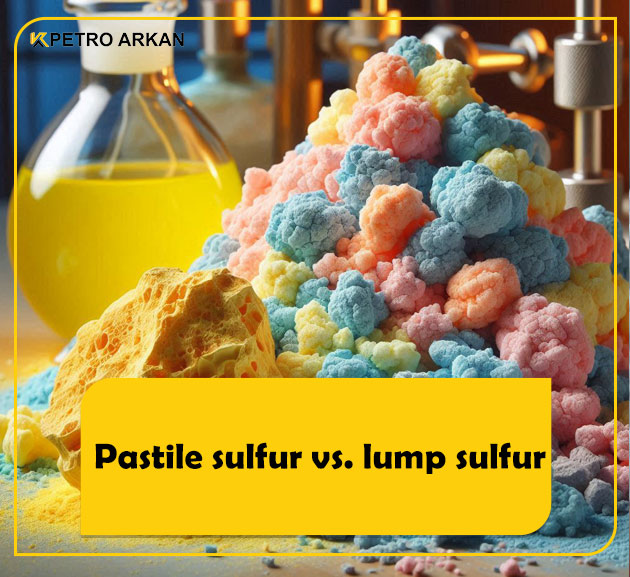Introduction to Pastille vs Lump Sulfur for Agriculture
Selecting between Pastille vs Lump Sulfur for Agriculture is pivotal for optimizing soil health and crop productivity. These sulfur fertilizers differ in form, application, and performance, impacting their suitability for farming needs. PetroArkanCompany examines the attributes of Pastille vs Lump Sulfur for Agriculture to guide farmers in making informed decisions for effective agricultural applications.
Characteristics of Pastille and Lump Sulfur
Pastille Sulfur
Pastille sulfur consists of uniform granules or pellets (90–99.5% sulfur purity) enhanced with additives like bentonite clay for improved dispersion. The Pastille vs Lump Sulfur for Agriculture comparison highlights pastilles’ slow-release properties, ensuring a steady sulfur supply to enhance long-term soil fertility and crop growth.
Lump Sulfur
Lump sulfur appears as irregular, unprocessed chunks with 90–99% sulfur purity, lacking additives. In Pastille vs Lump Sulfur for Agriculture, lump sulfur requires grinding for uniform application, and its release rate can be less predictable, making it suitable for specific soil or pest control needs.
Benefits and Applications
Advantages of Pastille Sulfur
The Pastille vs Lump Sulfur for Agriculture choice favors pastilles for:
-
Ease of Application: Uniform granules ensure even distribution and precise dosing.
-
Low Dust: Reduces handling issues and equipment wear.
-
Slow Release: Sustained sulfur delivery supports consistent soil health.
Advantages of Lump Sulfur
Lump sulfur offers:
-
Cost-Effectiveness: Less processing reduces costs.
-
Versatility: Ideal for direct burning in fumigation or pH adjustment in alkaline soils.
Application Techniques
In Pastille vs Lump Sulfur for Agriculture, application methods include:
-
Pastille Sulfur: Broadcast or applied via irrigation for uniform nutrient delivery, leveraging its small size (1–2 mm).
-
Lump Sulfur: Requires crushing for even spreading, often used for soil acidification or pest control in agricultural applications.
Storage and Handling
Pastille sulfur’s uniform granules minimize dust and caking, simplifying storage. Lump sulfur, prone to dust and moisture absorption, requires careful handling. PetroArkanCompany ensures both sulfur fertilizers meet high standards for reliable use.
Conclusion
The choice of Pastille vs Lump Sulfur for Agriculture hinges on application needs and handling preferences. Pastilles excel in ease and consistency, while lump sulfur suits cost-effective or specialized uses. PetroArkanCompany provides premium Pastille vs Lump Sulfur for Agriculture, ensuring optimal soil health and crop success.
FAQ
What are the key differences between pastille and lump sulfur?
Pastille sulfur is uniform, high-purity (90–99.5%) granules with additives; lump sulfur is irregular, less pure (90–99%), and unprocessed.
How do I choose between pastille and lump sulfur for farming?
Pastilles offer easy, slow-release application; lump sulfur suits pH correction or fumigation but may need grinding.
What are the storage considerations for sulfur fertilizers?
Pastilles are dust-free and easy to store; lump sulfur requires moisture protection and dust control.
How do sulfur fertilizers benefit crops?
They enhance protein synthesis, chlorophyll production, and disease resistance in agricultural applications.
Where can I source high-quality sulfur fertilizers?
PetroArkanCompany offers reliable, high-purity pastille and lump sulfur for farming needs.








No comment